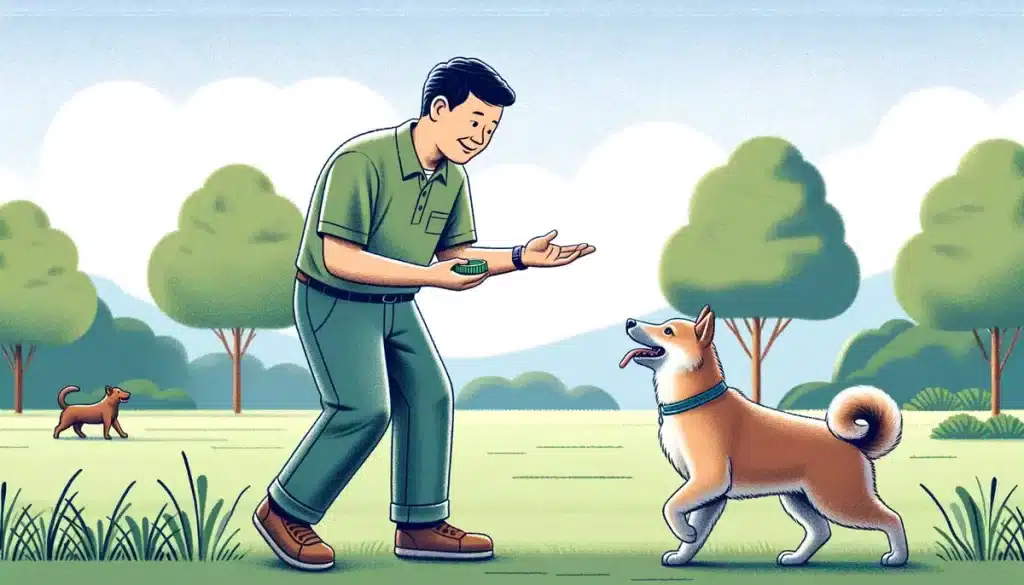Summary
Teaching your dog its name is crucial for safety, bonding, and training. Choose a short, clear name (1-2 syllables with hard consonants). Create positive associations by saying the name happily and immediately rewarding with treats, praise, or play. Repeat this frequently (20-30 times daily in short sessions), gradually adding distractions. Reward your dog for any response to their name. Avoid using their name during punishment. Be patient and consistent. Start training in a quiet area and stick to one primary name initially. Consistent positive reinforcement will help your dog learn their name quickly.
Why is it Necessary to Teach a Name to a Dog?
The same theory applies to animals, as humans need names for their specifications. The dogs at your home also require their name for specific identification in the crowd.
For example, if you have taken your dog for an outing and suddenly he has run away from the leash, at this time, you would require a name by which you can call your pet and by which the canine can understand that his master is calling him.
This is the reason why teaching a name to a dog is necessary. Not only is it helpful in finding your dog in a crowded place, but it is also helpful in training dogs as it also works as a command for the canine.
Why Do Dogs Respond Quickly to Their Names?
We all know that we call the name of our canines whenever we feed them, during workout and walking sessions, and when we want to spend time with them. The owner’s regular name usage makes them familiar with the word.
The dogs are usually unaware that it’s his name. Still, they respond quickly to it because whenever this name is called him, something good happens to him, like playtime or mealtime.
Hence, with the regular usage of the name daily, the dogs habitually listen to this name, so they respond as fast as possible to these words.
How to Teach a Dog its Name?
To teach a dog its name, the owner has to follow some proper steps with appropriate guidance, as it is quite difficult to teach a dog its name. The steps a dog owner can follow to prepare the name of a canine are mentioned below.
Decide the Name You are Going to Choose
The first step that the owner has to follow to teach a name to the canine is to decide on a suitable name for the canine. The owner is suggested to choose a name based on the nature of the canine, as the name of the canine often reflects its character.
Introduce the Canine to His Name
The most important step in the procedure is introducing the canine to his name. All the owner can do is tell the name like “Bruno,” get closer to the pet, and feed him every time after calling his name.
Repeat it Almost 20-30 Times a Day.
Repetition of the canine’s name is necessary as it will make him understand that your word is somehow related to him.
Positive Reinforcement
The owner should strictly follow the rule of positive reinforcement while repeating the canine’s name.
For example, reward the pet every time you use his name, such as certain treats, play sessions, an outing, and even quality time.
This will make him remember the word as dogs grab those things easily, which brings them positive vibes.
Strictly Ignore Punishments
It is suggested that the owner ignores using the canine’s name while he has to behave strictly with the dog in the first few days of practice. Negative reinforcement can affect the canine’s training, thus making him lose his focus on the name.
Avoid the Overuse of the Name
The owner should remember that overusing the name must be strictly avoided. Using the canine’s name every time can make a noise and disturb the pet. Make sure you have a valid reason every time you use it, like treats, workout sessions, etc.
Make the Name Consistent
Sometimes, dog owners get fond of the variations when using their canine name. We all know that using short names is a trend nowadays. However, the owner should strictly avoid this behavior in the first few days of the training as this can confuse the canine.
Reward Him Every Time He Responds
Giving a reward to the canine is the ultimate way to make the pet remember anything, as dogs don’t easily forget the things that bring them delicious rewards. Give him his favorite treat if your dog barks instantly after your call. This can be very helpful in the training process.
Make it a Bit More Challenging.
If you notice that the canine is responding to your calls, the next step you have to take is to create some distraction for the canine during the training.
Use his name when sleeping or eating, throw things like a ball toward him during the training session, and call his name. You will almost win the battle if the doggy responds to your call in every situation.
Give Some Time to the Training
We all know that each dog from a different breed possesses different types of qualities, due to which the quality of their memory also differs.
If you notice that your dog is taking time to learn his name, you have to consider it as his new skills grasping capability is a bit low. The only thing that can bring you success is being consistent with the process.
All the above-discussed steps are based on the preferences of dog owners about which steps they use more for teaching names to the canine and also on which the canine quickly responds.
So, a dog owner is looking for steps to teach to teach canines names. In that case, the owner can rely on the abovementioned steps for the best results.
Things the Owner Should Take Care of While Naming the Dog
Now, we have discussed the steps to follow while naming the dog. The next thing the owner has to do is follow some facts while naming the dog, as the more accurate the method will be used in naming the dog, the faster the training will give results. The things the owner should consider while naming the dog are discussed below.
Always Keep the Name Short and Simple
It was noticed among the dog owners that some of them want to avoid using a common type of name like Bruno and Rover for their canine.
They want that whenever they call their name, it will impact the surroundings, so they use quite a long name for their canine.
But this must be strictly avoided as using a long name can lead to difficulties in the training.
It can be time-consuming and lead to a confusing environment for the dog and owner during training. That is why it is suggested that the owner keep the name short and simple.
Choose a Name With a sharp-sounding Constant.
Yes, dogs don’t know word choice, but they are not deaf. If the name is attractive, the canine will easily respond. It was noticed in most dogs that when they are called with a sharp-sounding name, it starts with consonants like P, K, and D.
They respond quickly to it as these sharp consonants produce sounds similar to the noise created by a clicker, thus striking the dog’s ears and making him react promptly.
Using sharp-sounding consonants in a name in training can make it easier as the name will seem attractive to the pet, so the pet will quickly respond to it.
These are the two things that the owner should notice while knowing how to teach a dog its name and choosing a nickname for their canine, as this will not only help in the training process but will also impact the surroundings whenever the owner calls the pet. But be patient with the entire process.
Once again, this reminds you to treat your dog religiously after every successful name-calling.
This will encourage them to perform better and associate themselves easily with fun plays.
Always go for positive reinforcements. Create distracting situations so that they train for uncertain environments.


